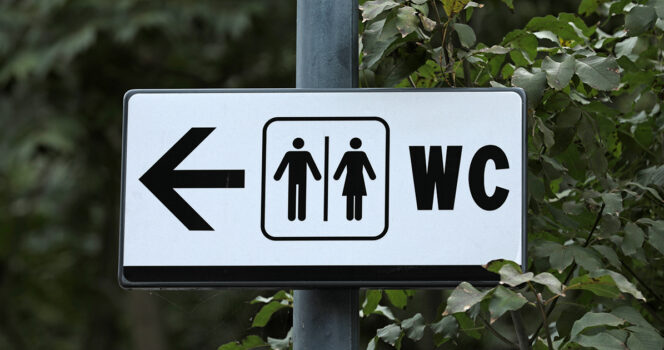The Meaning Behind the ‘WC’ Sign Outside Bathrooms: What You Didn’t Know

Have you ever seen the letters "WC" outside a public bathroom and wondered what they mean? You're not alone! Many people worldwide are puzzled by the "WC" sign, which marks a room that typically contains a toilet and sink. But what exactly does "WC" stand for, and why is it used in some places instead of the words "bathroom" or "restroom"?
If you're curious about this mysterious acronym, we’ve got the answers—and while it might not make the term "WC" any clearer than "restroom" or "loo," we’ll dive into the interesting history behind it.
WC: What Does It Stand For?
In 2020, a viral TikTok video by Shelby and Dylan stirred up online conversation about bathroom terminology differences between Americans and Canadians. Dylan, seeing a sign that read “washroom,” humorously questioned, “What in the world is a washroom?” “And what are they washing in there?” he added, leading Shelby to quip, “Do you rest in a restroom?”
@shelbanddyl I didn’t know he had Canadian roots 🤣 We got to ride a horse trolley and loved it! We can’t wait to come back and do a lot more! ❤️#shelbanddyl #husbandreacts #canada #couples #relationships ♬ original sound - Shelby & Dylan
The video went viral as users shared their preferences for bathroom terminology, from “bathroom” and “restroom” to “toilet” and “washroom.” One user even joked that when they asked for the “washroom” at Disneyland, they were sent to the laundromat!
The Water Closet (WC) Explained
According to Merriam-Webster, the term “water closet” (WC) refers to “a compartment or room with a toilet,” or simply, “a toilet bowl and its accessories.” The term originally came from a time when “restrooms” or “bathrooms” referred to spaces for activities like bathing or preparing for the day—things that didn’t necessarily involve using the toilet.
So, when you need to go potty, the “water closet” is where you’d find the toilet. Over time, the term evolved and became widely used internationally, especially in formal settings like airports, hotels, and restaurants, where travelers from around the world might be more familiar with the WC symbol.
History of the WC and Why We Use It
Before the late 19th century, indoor toilets were a luxury that only the wealthy could afford. The rest of the population relied on outhouses or other outdoor facilities. During this time, “bathrooms” existed primarily for bathing purposes but typically didn’t contain toilets.
The shift to indoor plumbing began in the late 1800s, and by 1890, the water closet became common in American homes. These separate rooms housed the toilet, with the rest of the bathroom reserved for bathing.
It wasn’t until the early 20th century that modern bathrooms—combining both the bathtub and toilet in one space—became widespread. But as privacy concerns arose in shared spaces, the term “water closet” started being used for a smaller, enclosed area within the bathroom, dedicated solely to the toilet.
WC, Restroom, or Loo: The Global Debate
The use of WC, restroom, washroom, and loo varies by location. In North America, "bathroom" and "restroom" are commonly used, while “washroom” is more common in Canada and parts of the U.S., particularly in the Midwest. Meanwhile, other countries use different terms—such as "lavatory" or “loo” in the UK, and "toilet" in many other places.
On Reddit, people have often discussed why terms like “bathroom” or “restroom” seem odd when they don’t involve bathing or resting. One user pointed out that in Russian, it’s called “a room without windows,” despite the presence of windows. In Esperanto, the word is “necesejo,” meaning “necessary place.”
The variety of names for the room containing the toilet has sparked global curiosity, with some users adding their own humorous takes. One commenter noted, “You should be washing in the washroom, not resting in a restroom!”
Why Is WC So Popular in Public Spaces?
If you've traveled internationally, you’ve likely noticed the universal “WC” signage in airports, restaurants, and hotels. Why is it so common in these public spaces? The answer lies in the need for a neutral, internationally understood symbol. The WC is instantly recognizable to travelers across the world, making it an ideal choice for places catering to international visitors.
Final Thoughts: What Do You Call the Room with the Toilet?
Now that you know more about the history and meaning behind the “WC” sign, we’d love to hear from you! What do you call the room that contains a toilet? Do you prefer “bathroom,” “restroom,” “washroom,” or another term entirely?
Drop a comment and share your thoughts. And if you found this article informative, don't forget to share it with your friends and family!










